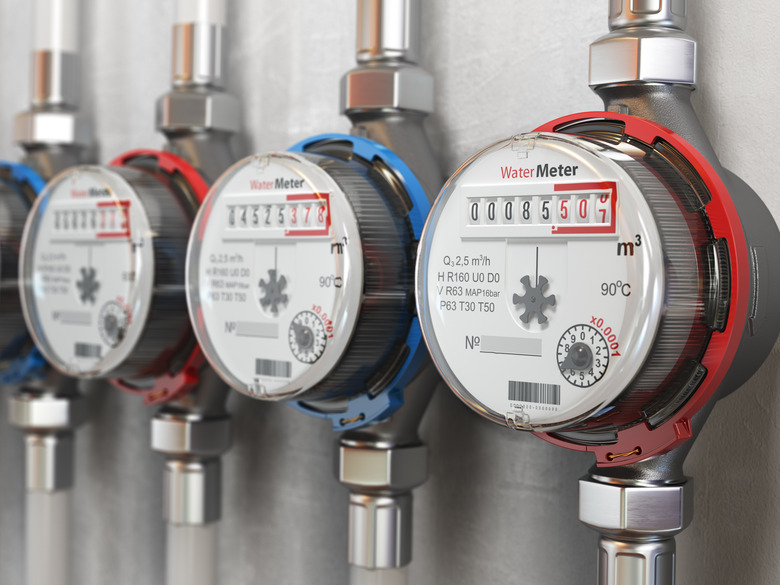How To Tell If Your Water Meter Is Wrong
We may receive a commission on purchases made from links.
Is your water bill suddenly higher than expected? While no one enjoys paying bills, it's even more jarring when there's a big spike in your water usage even if your water habits haven't changed. You might assume something is wrong with your water meter, but the real issue could be a leak somewhere in your plumbing system. Running a few tests can help you determine why you're suddenly seeing an increase in your water bill.
Leaks vs. Inaccuracies
Leaks vs. Inaccuracies
Water meter inaccuracies are relatively rare, so it's important to investigate other causes when your water bill is higher than normal. Leaks in your plumbing system are often the cause of a suddenly higher bill. While some leaks are obvious, many pipes are hidden behind walls, and you won't notice the leaks until they cause serious water damage. Starting with a few meter checks can help you determine if it's accurate. If it's accurate, it's time to start looking for the leaks.
Read the Meter
Read the Meter
If you don't know where it is, locating your water meter is the first step. It's often near the curb in the ground and is covered with a lid. If you're lucky, the lid will be labeled. Pop the lid off to find the meter. The water meter is inside the home in some cases.
Record the reading on the meter. Then, check the reading from your last water bill. If what you're seeing on your meter is lower than what the bill says, the water department may have incorrectly read your meter. You can request a new reading if this happens. If the reading is higher than what the bill says, you can eliminate a bad reading as the cause.
Check for Leaks
Check for Leaks
Finding hidden water leaks isn't always easy. One way to check is by watching the flow indicator. It's a small wheel on the larger dial that rotates, and it can detect even tiny amounts of water flowing. Make sure no one uses any water fixtures or appliances in your home and watch the flow indicator to see if it moves. If it does, you likely have a leak.
Inspect in and around your home to narrow down the location of the leak. Start with exposed pipes where you can easily see drips. Continue through finished areas, looking closely on walls, floors, and ceilings for dampness, drips, soft drywall, or water stains. Check outside for underground pipe leaks by looking for wet or muddy spots when the weather has been dry or grass that's greener than the rest.
Do a Bucket Test
Do a Bucket Test
If there's no sign of leaking, do a bucket test to check the meter accuracy. Ensure no one is using water anywhere in the house while you run the test. Write down the exact reading on the water meter. Water meters can be in either gallons or cubic feet, which is important to know.
One gallon of water equals about 0.133 or 0.134 cubic feet. If you fill a 1-gallon bucket with water (and if water is not being used elsewhere), the meter should go up by that amount. To make it easier, fill a 5-gallon bucket three times to use 15 gallons of water, which equals 2 cubic feet. The reading should go up by two.
If the meter moves as expected, it's likely working correctly. If not, you could have a faulty water meter. Contact the water department with any concerns.
Keep a Log
Keep a Log
Recording your water meter reading every month to create a log can help you track differences and notice major changes quickly. Write down the meter reading on the same day each month to get a good idea of how much water you typically use.
